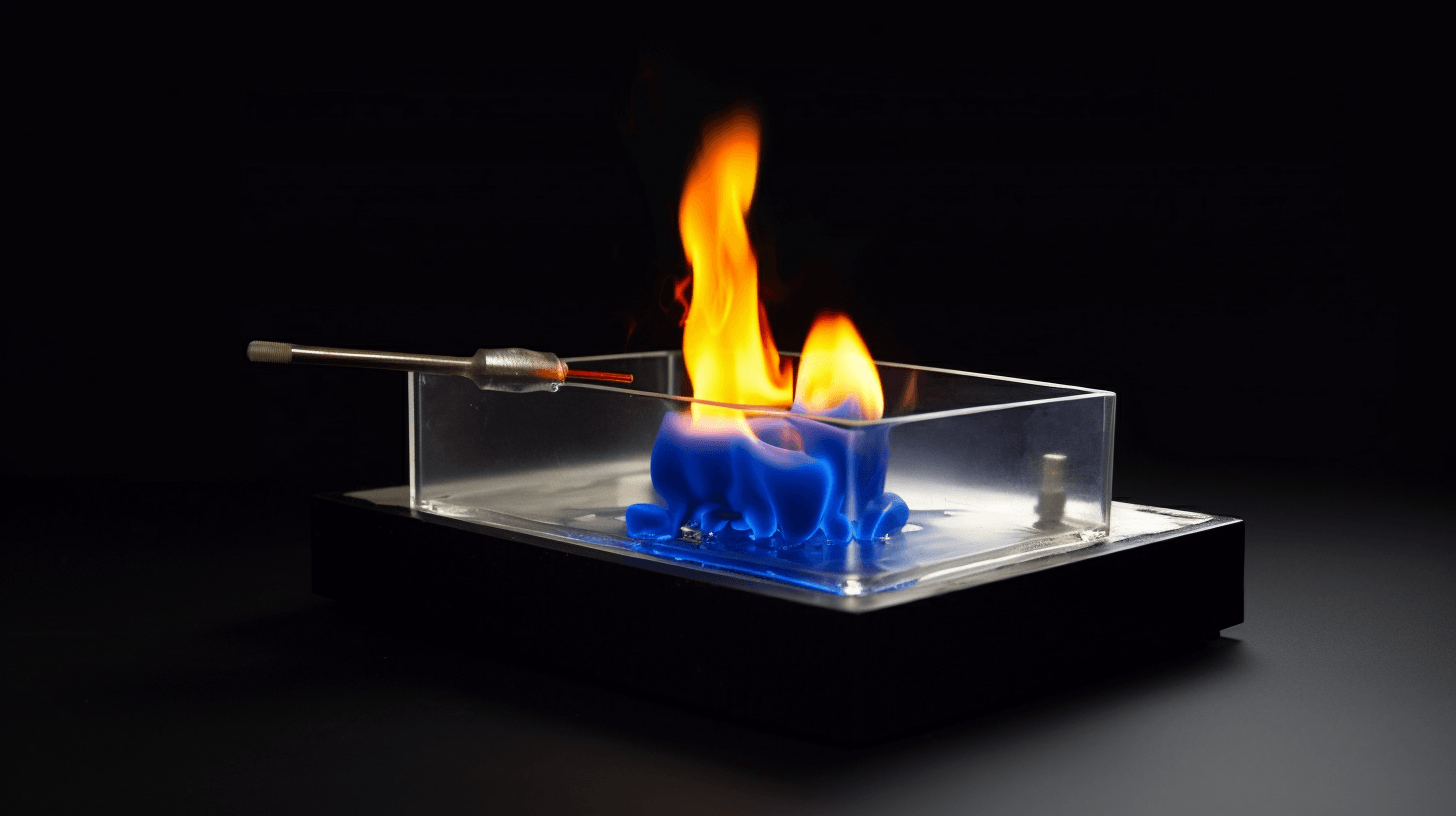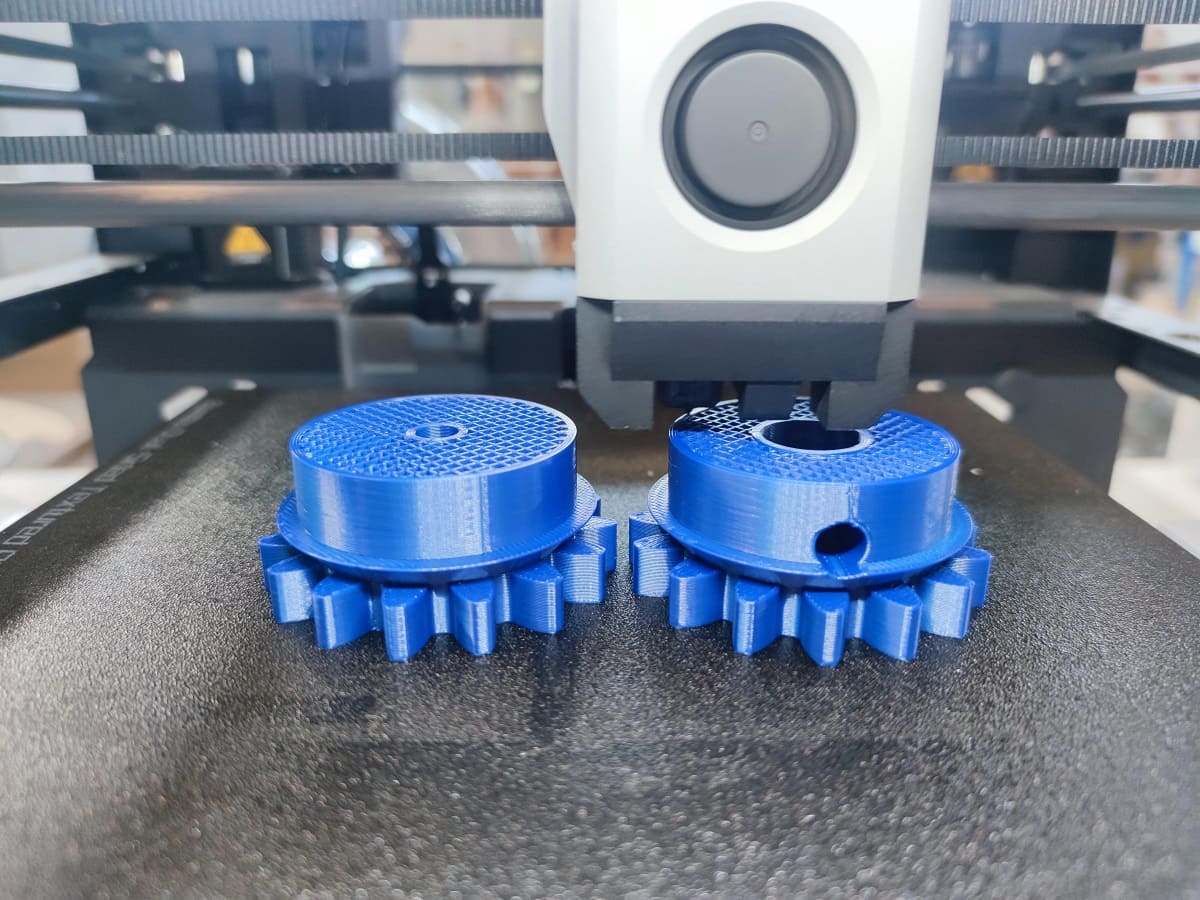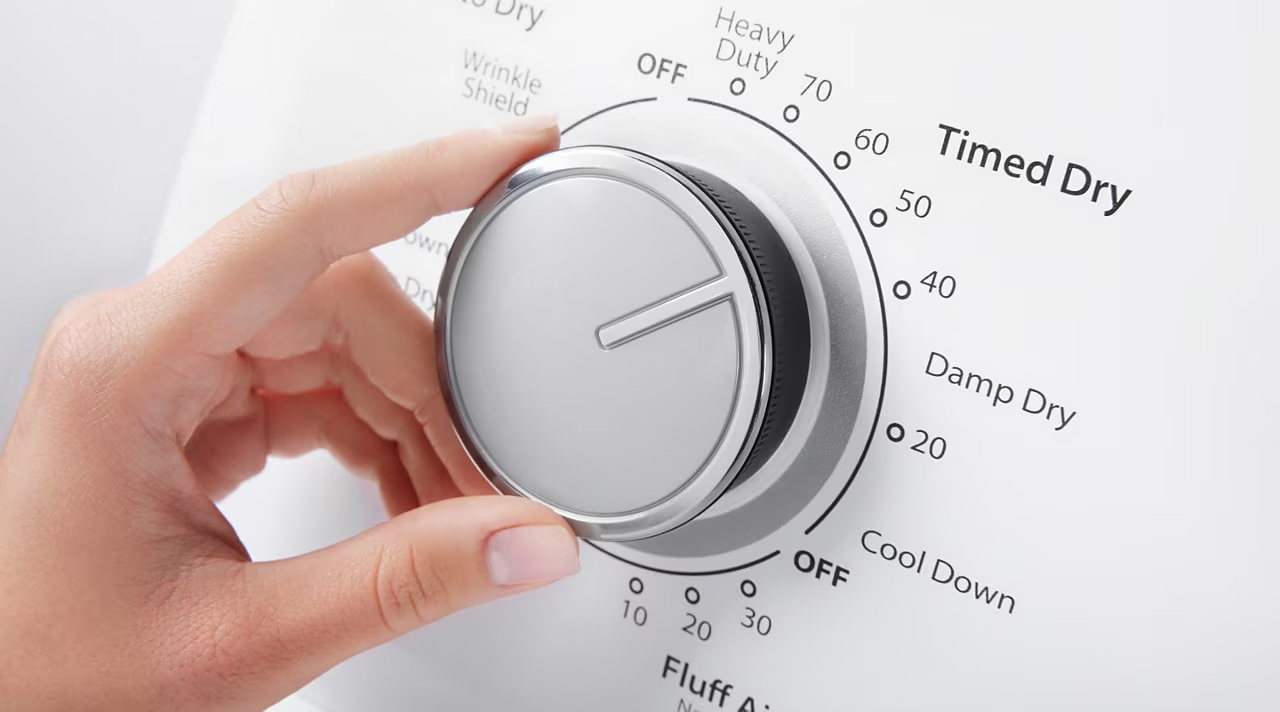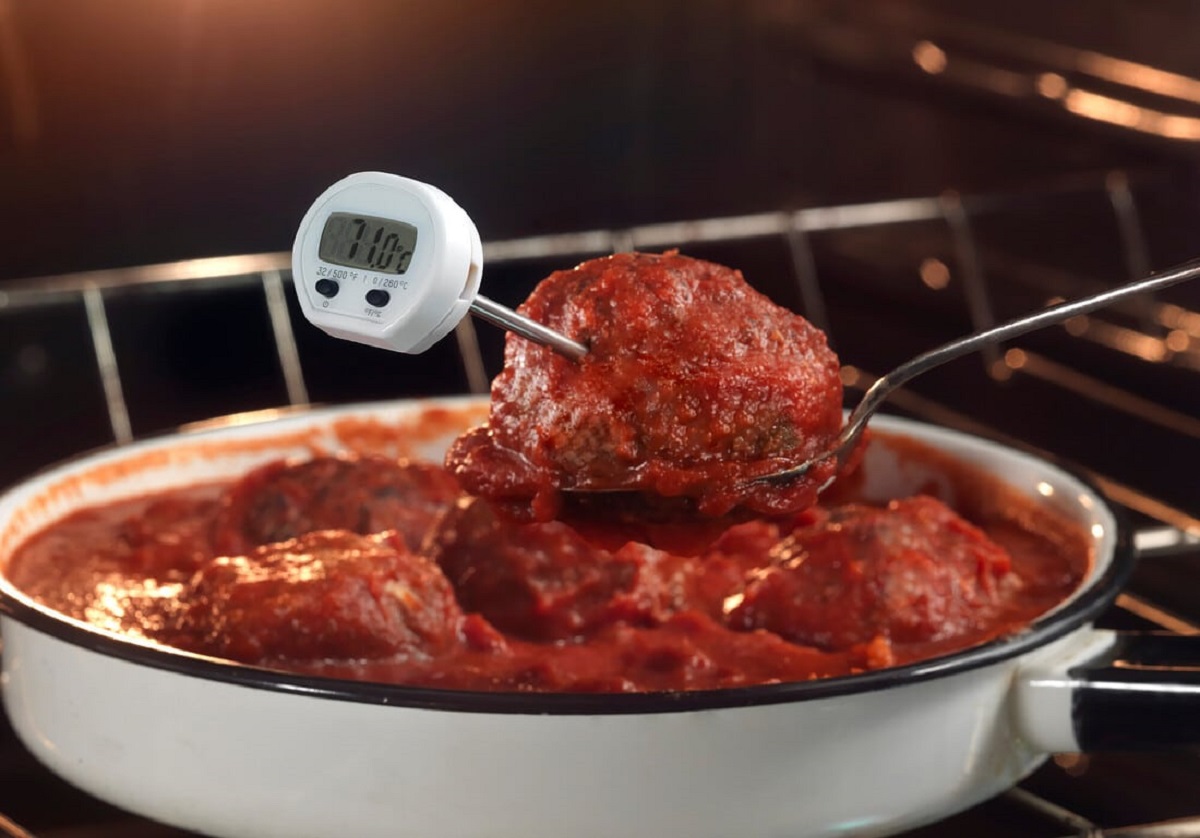Home>Home, Lifestyle & DIY>Understanding The Temperature Range Of An Iron
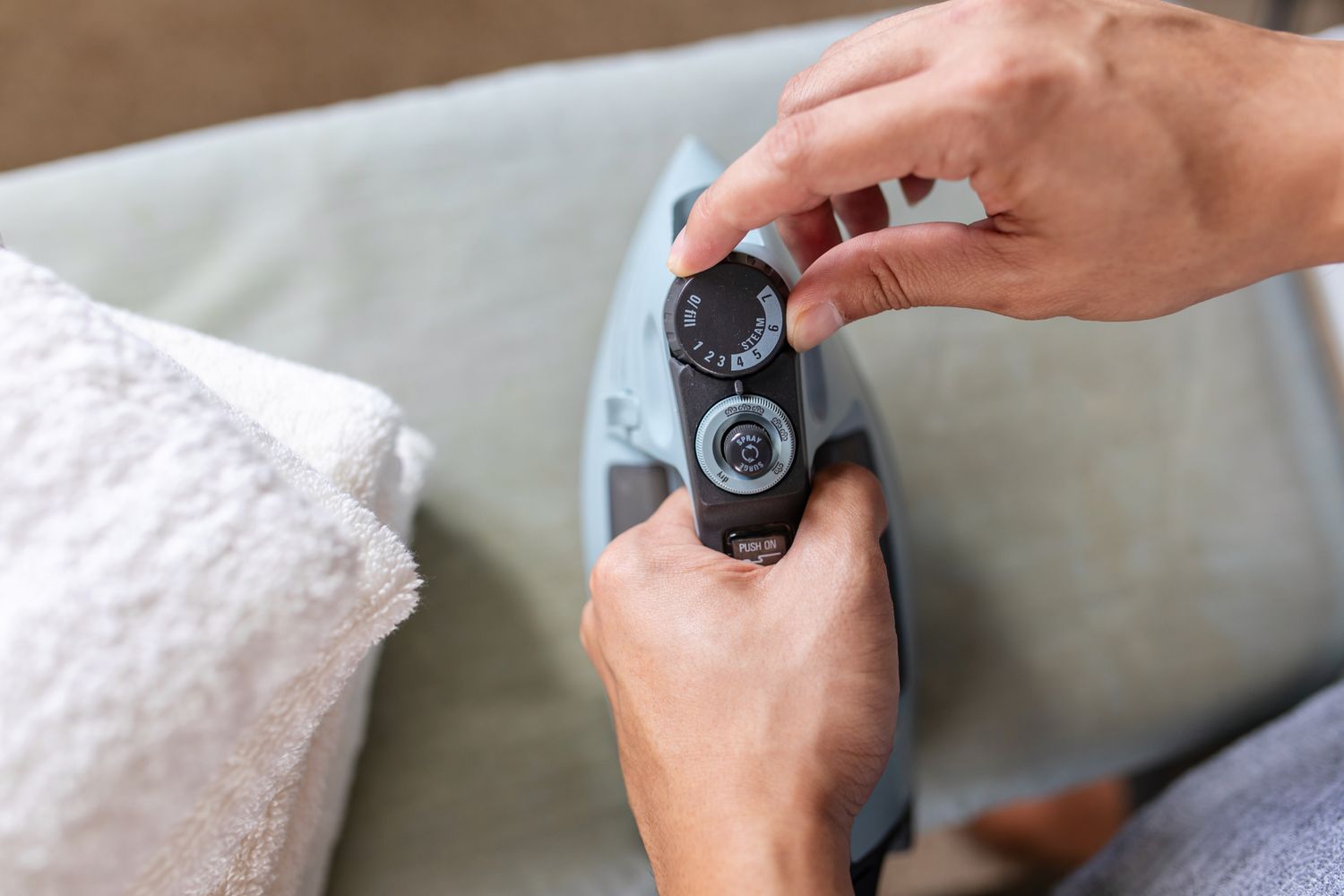

Home, Lifestyle & DIY
Understanding The Temperature Range Of An Iron
Published: February 22, 2024
Learn about the temperature range of an iron and how to use it effectively at home. Improve your DIY skills and lifestyle with this essential knowledge.
(Many of the links in this article redirect to a specific reviewed product. Your purchase of these products through affiliate links helps to generate commission for Temperatures.com, at no extra cost. Learn more)
Table of Contents
The Importance of Temperature Control in Ironing
Temperature control is a crucial aspect of achieving perfectly pressed clothes. The ability to adjust the temperature of your iron ensures that you can effectively and safely iron a wide variety of fabrics. Understanding the significance of temperature control in ironing can help you avoid damaging your clothes and achieve professional-looking results.
When it comes to ironing, different fabrics require different levels of heat to be effectively smoothed out. For instance, delicate fabrics such as silk and chiffon necessitate lower temperatures to prevent scorching or burning, while cotton and linen can withstand higher heat settings to effectively remove wrinkles. By having the ability to adjust the temperature of your iron, you can cater to the specific needs of each fabric, ensuring that your garments remain in pristine condition.
Moreover, temperature control plays a pivotal role in preserving the integrity of your clothes. Exposing fabrics to excessive heat can lead to irreversible damage, such as discoloration, scorch marks, or even melting. By carefully regulating the temperature of your iron, you can prolong the lifespan of your garments and keep them looking as good as new.
Furthermore, temperature control is essential for achieving efficient and effective ironing results. Using the appropriate temperature setting for each fabric type allows the fibers to relax and release wrinkles more easily, resulting in a smoother and more polished finish. This not only saves time but also reduces the need for excessive back-and-forth ironing, minimizing the risk of wear and tear on the fabric.
In essence, the importance of temperature control in ironing cannot be overstated. It is a fundamental aspect of garment care that directly impacts the quality, longevity, and overall appearance of your clothes. By mastering temperature control, you can elevate your ironing skills and ensure that your wardrobe remains impeccably pressed and well-maintained.
Read more: How to Understand Zone 8 Temperature Range
The Different Temperature Settings on an Iron
When you glance at the temperature dial on your iron, you'll notice a range of numbers or fabric symbols. Each of these settings corresponds to a specific temperature range tailored to different types of fabrics. Understanding these temperature settings is essential for achieving optimal ironing results without causing damage to your clothes.
-
Synthetic Fabrics (Low Heat Setting): The lowest temperature setting on the iron is designed for synthetic fabrics such as polyester, nylon, and acrylic. These materials are sensitive to heat and can easily melt or become shiny if exposed to high temperatures. Setting the iron to the synthetic fabric setting ensures that these fabrics are gently smoothed out without the risk of damage.
-
Silk and Delicate Fabrics (Low to Medium Heat Setting): The next temperature range caters to delicate fabrics like silk, chiffon, and satin. These materials require a slightly higher temperature than synthetics but still necessitate gentle heat to prevent scorching or burning. By selecting the appropriate setting for delicate fabrics, you can achieve wrinkle-free results while safeguarding the fabric's integrity.
-
Wool and Polyester Blends (Medium Heat Setting): Fabrics such as wool and polyester blends benefit from a moderate level of heat to effectively remove wrinkles. The medium heat setting on the iron is ideal for these materials, allowing for efficient smoothing without subjecting them to excessive temperatures that could cause damage.
-
Cotton and Linen (High Heat Setting): The highest temperature setting on the iron is tailored for robust fabrics like cotton and linen. These materials can withstand higher heat and require a significant amount of steam to effectively release wrinkles. By using the high heat setting, you can achieve crisp, professional-looking results when ironing cotton shirts, linen trousers, and other sturdy garments.
Understanding the different temperature settings on an iron empowers you to tailor the iron's heat output to the specific requirements of each fabric. This not only ensures that your clothes are impeccably pressed but also minimizes the risk of damage, allowing you to maintain the quality and longevity of your wardrobe. By mastering the art of adjusting the temperature settings on your iron, you can confidently tackle a diverse range of fabrics with precision and care.
Understanding the Ideal Temperature for Different Fabrics
Achieving perfectly pressed clothes hinges on understanding the ideal temperature for different fabrics. Each type of fabric has distinct characteristics and requires specific heat levels to ensure effective wrinkle removal without causing damage. By comprehending the ideal temperature ranges for various fabrics, you can elevate your ironing prowess and preserve the integrity of your garments.
Synthetic Fabrics
Synthetic fabrics, including polyester, nylon, and acrylic, are sensitive to heat and can easily melt or become shiny if exposed to high temperatures. The ideal temperature for ironing synthetic fabrics falls within the range of 275°F to 300°F (135°C to 150°C). By selecting the low heat setting on your iron, you can gently smooth out wrinkles in synthetic garments without risking damage.
Silk and Delicate Fabrics
Delicate fabrics such as silk, chiffon, and satin require a cautious approach to ironing due to their susceptibility to heat. The ideal temperature for these fabrics ranges from 225°F to 300°F (107°C to 150°C), falling within the low to medium heat settings on the iron. This gentle heat ensures that delicate fabrics are effectively smoothed out without the risk of scorching or burning.
Wool and Polyester Blends
Fabrics like wool and polyester blends benefit from a moderate level of heat to effectively remove wrinkles. The ideal temperature for ironing wool and polyester blends ranges from 300°F to 350°F (150°C to 177°C), falling within the medium heat setting on the iron. This moderate heat allows for efficient wrinkle removal while safeguarding the integrity of the fabric.
Cotton and Linen
Sturdy fabrics such as cotton and linen can withstand higher heat levels to achieve crisp, professional-looking results. The ideal temperature for ironing cotton and linen falls within the range of 350°F to 400°F (177°C to 204°C), aligning with the high heat setting on the iron. By utilizing the appropriate temperature setting, you can effectively smooth out wrinkles in cotton and linen garments, ensuring a polished finish.
Understanding the ideal temperature for different fabrics empowers you to approach ironing with precision and care. By adhering to the recommended temperature ranges, you can achieve wrinkle-free results while safeguarding the quality and longevity of your clothes. Mastering the art of adjusting the iron's temperature settings based on fabric type is key to maintaining a well-pressed wardrobe and ensuring that each garment retains its pristine condition.
Tips for Adjusting the Temperature of Your Iron
-
Read Fabric Care Labels: Before ironing a garment, always refer to the fabric care label for specific ironing instructions. The label provides valuable guidance on the recommended temperature settings for that particular fabric, ensuring that you apply the appropriate heat level without risking damage.
-
Perform a Test: If you are unsure about the ideal temperature for a specific fabric, conduct a heat tolerance test on a small, inconspicuous area. Start with a lower temperature setting and gradually increase it until you find the optimal heat level that effectively smooths out wrinkles without causing any adverse effects.
-
Invest in a Quality Iron: Opt for an iron with adjustable temperature settings and a clear temperature indicator. A high-quality iron allows for precise temperature control, enabling you to tailor the heat output to the requirements of different fabrics with ease and accuracy.
-
Preheat the Iron: Allow the iron to preheat for the recommended duration based on the selected temperature setting. Preheating ensures that the iron reaches the desired temperature, optimizing its effectiveness in removing wrinkles while preventing the need for excessive passes over the fabric.
-
Use a Damp Cloth: For fabrics that are prone to scorching or have delicate fibers, place a damp cloth between the iron and the fabric. The moisture from the cloth creates a protective barrier, allowing you to effectively smooth out wrinkles using a lower temperature setting while safeguarding the fabric from direct heat exposure.
-
Adjust for Different Fabric Layers: When ironing layered fabrics, such as garments with lining or multiple fabric types, consider the most delicate fabric in the ensemble. Adjust the iron's temperature based on the most sensitive fabric to prevent damage to any layers during the ironing process.
-
Utilize Steam Functionality: Many irons feature a steam option that can be used in conjunction with the temperature settings. Steam helps relax the fabric fibers, making it easier to remove wrinkles. When using the steam function, ensure that the temperature setting aligns with the fabric's requirements to achieve optimal results.
-
Regularly Clean the Iron: A clean iron ensures consistent heat distribution and prevents residue buildup that can transfer onto fabrics, potentially causing stains or damage. Follow the manufacturer's instructions for cleaning and maintaining your iron to uphold its performance and prolong its lifespan.
By implementing these tips, you can effectively adjust the temperature of your iron to suit the specific requirements of different fabrics. This approach not only enhances the quality of your ironing results but also contributes to the longevity and pristine condition of your garments.
Common Mistakes in Ironing Due to Incorrect Temperature
Incorrect temperature control during ironing can lead to a myriad of common mistakes that compromise the quality and integrity of your garments. Understanding these mistakes is essential for honing your ironing skills and preserving the condition of your clothes.
-
Scorching or Burning Fabrics: One of the most prevalent mistakes resulting from incorrect temperature settings is scorching or burning fabrics. Exposing delicate materials, such as silk or synthetic blends, to high heat can lead to irreversible damage, including discoloration and unsightly shiny patches. Additionally, scorch marks caused by excessive heat can mar the appearance of garments, rendering them unwearable.
-
Wrinkle Persistence: Using an inadequate temperature setting can result in persistent wrinkles, especially on fabrics that require higher heat levels for effective smoothing, such as cotton or linen. Insufficient heat fails to relax the fabric fibers, making it challenging to achieve wrinkle-free results, ultimately undermining the purpose of ironing.
-
Fabric Shine and Gloss: Overheating synthetic fabrics due to incorrect temperature settings can cause them to develop a shiny or glossy appearance. This alteration in texture detracts from the fabric's original aesthetic and can be particularly noticeable on garments, diminishing their overall appeal.
-
Heat Damage to Embellishments: Incorrect temperature control poses a risk to garments adorned with embellishments or delicate details. High heat can cause these embellishments to warp, melt, or detach from the fabric, compromising the garment's decorative elements and overall visual appeal.
-
Uneven Ironing Results: Inconsistent temperature settings across different sections of a garment can lead to uneven ironing results. This may manifest as variations in fabric texture and the persistence of wrinkles in certain areas, detracting from the garment's overall polished appearance.
-
Fabric Discoloration: Excessive heat, particularly on delicate or light-colored fabrics, can result in discoloration or yellowing. This mistake is particularly disheartening as it can permanently alter the garment's original hue, diminishing its visual appeal and wearability.
-
Reduced Fabric Longevity: Subjecting fabrics to incorrect temperature settings during ironing can contribute to premature wear and tear. High heat can weaken fibers, leading to fabric degradation and a shortened lifespan for your garments.
By recognizing these common mistakes stemming from incorrect temperature control during ironing, you can take proactive measures to avoid them and elevate the quality of your ironing endeavors. Mastering the art of adjusting the iron's temperature settings based on fabric type is pivotal in ensuring that your garments remain impeccably pressed and well-maintained.
Read more: Ideal Temperature Range For Dogs In A House
How to Test the Temperature of Your Iron
Testing the temperature of your iron is a crucial step in ensuring that the heat level is suitable for the fabric you intend to iron. By conducting a simple temperature test, you can ascertain the iron's readiness to effectively smooth out wrinkles without causing damage. Here's a step-by-step guide on how to test the temperature of your iron:
-
Gather Necessary Materials: To conduct the temperature test, you will need a clean white cotton cloth or a piece of muslin fabric. The fabric should be free from any dyes or finishes that could potentially transfer onto your garments during the test.
-
Set the Iron to the Desired Temperature: Adjust your iron to the temperature setting recommended for the fabric you plan to iron. Allow the iron to preheat for the specified duration to ensure that it reaches the desired temperature.
-
Prepare the Test Fabric: Cut a small piece of the white cotton cloth or muslin fabric to use for the temperature test. It's advisable to use a fabric swatch that is similar to the material of the garment you will be ironing.
-
Place the Fabric Under the Iron: Lay the prepared fabric swatch on a flat, heat-resistant surface. Once the iron has reached the desired temperature, gently place it on the fabric swatch for a few seconds. Avoid applying excessive pressure, as the goal is to assess the iron's heat level without causing damage to the fabric.
-
Observe the Results: After a few seconds, lift the iron and carefully examine the test fabric. Look for any signs of scorching, discoloration, or changes in texture. If the fabric appears undamaged and the wrinkles are effectively smoothed out, the iron is at the appropriate temperature for that specific fabric type.
-
Adjust if Necessary: If the test fabric exhibits any adverse effects, such as scorch marks or changes in texture, the iron may be too hot for the fabric. In this case, allow the iron to cool down slightly before retesting or adjust the temperature setting to a lower level. Repeat the test until you achieve a satisfactory result without causing damage to the fabric.
By following these steps to test the temperature of your iron, you can confidently determine whether the heat level is suitable for the fabric at hand. This proactive approach allows you to prevent potential damage to your garments and ensures that your ironing endeavors yield professional-looking, wrinkle-free results.

